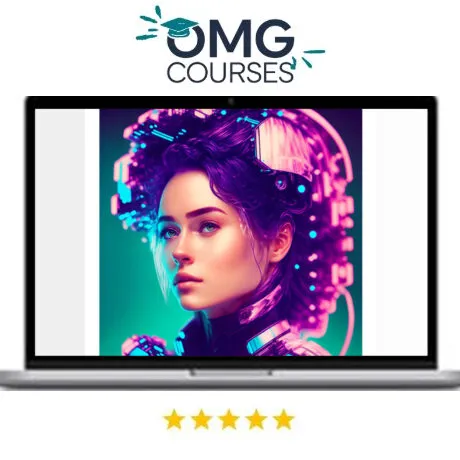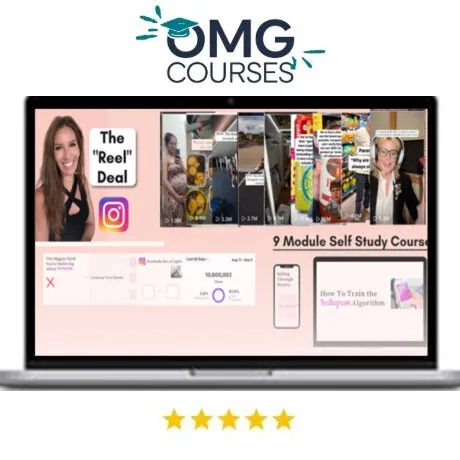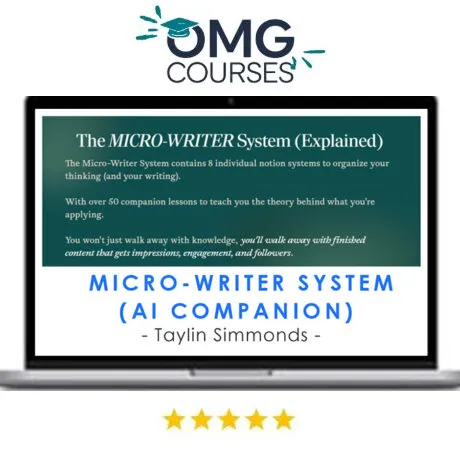Prompt Hero – Crash Course in AI Art Generation
$ 290,00 Original price was: $ 290,00.$ 13,00Current price is: $ 13,00.
Download Prompt Hero – Crash Course in AI Art Generation (822.3 MB) in Mega Drive, The area of AI art generation is dynamic and ever-evolving, pushing the limits of artistic expression. An overview of the fundamental technology, widely used tools, moral dilemmas, difficulties, and potential paths of AI art has been given by this crash course. A new age of creativity and cooperation will be ushered in by embracing AI’s promise while addressing ethical issues as it becomes an essential component of the cultural environment.

- 24/7 Customer Support & Instant Assistance
- High-Quality Original Content
- Regular Updates to Course Materials
- Verified and Reliable Download Links
- Secure Payment Options

Prompt Hero – Crash Course in AI Art Generation
Download Course Proof
Course Description
Description
Artificial Intelligence (AI) is changing the way we create art. With advanced algorithms and neural networks, AI art generation allows us to produce stunning, often surreal artworks that challenge traditional artistic boundaries. This crash course will give you an overview of how AI art generation works, the tools you can use, and the ethical considerations to keep in mind.
What Is AI Art Generation?
AI art generation uses neural networks such as Generative Adversarial Networks (GANs) and Variational Autoencoders (VAEs) to create unique artwork. GANs, introduced by Ian Goodfellow in 2014, have two components—a generator and a discriminator—that work together to create lifelike images. VAEs, on the other hand, learn the patterns in input data to generate novel outputs. These technologies provide the foundation for AI systems to produce diverse and visually captivating pieces.
Popular AI Art Tools
AI art tools have made the process easy for both artists and enthusiasts. Here are a few tools to explore:
- DeepDream (developed by Google): Transforms ordinary photos into dreamy, psychedelic visuals.
- RunwayML: A beginner-friendly interface that lets you work with various pre-trained models to create art with little or no coding.
- StyleGAN: A GAN-based tool known for creating highly realistic and customizable images.
How to Create AI Art
Creating AI art is simpler than you might think. Start by selecting a base image, such as a painting or photograph. Using an AI model, the system processes the input and generates a new creation inspired by the original. Adjusting parameters and experimenting with styles lets you push artistic boundaries and explore endless creative possibilities.
Ethical Considerations
AI art opens many doors, but it also brings challenges. Key ethical concerns include:
- Copyright: Who owns the rights to an AI-generated piece?
- Attribution: How do we credit original creators when AI tools are involved?
- Misuse: Could AI-generated art be used for unethical purposes?
Artists and policymakers must work together to establish guidelines ensuring fair use, proper attribution, and responsible innovation in AI art.
Challenges and Limitations
Despite its creativity, AI art is not without flaws:
- Bias: AI systems may reflect the biases present in their training data, leading to unintended or controversial results.
- Interpretability: Understanding how AI generates specific artwork can be complex and unclear.
Ongoing research is focused on addressing these limitations, working toward more reliable and interpretable AI outputs.
What’s Next for AI Art?
The future of AI art is exciting and full of possibilities. New developments in reinforcement learning, unsupervised learning, and multimodal AI are expected to make AI-generated art even more sophisticated and adaptive. Collaboration between artists and AI systems could give rise to entirely new genres of art, seamlessly blending human imagination with machine creativity.
Final Thoughts
AI art generation is revolutionizing the art world, merging human creativity with machine intelligence. By understanding its technologies, tools, and ethics, we can harness its power responsibly and usher in a new era of innovative artistic expression.
Affordable Courses at Omgcourses.com
At Omgcourses.com, we strive to offer affordable and quality courses for individuals who want to learn but may not have the budget for expensive training. Our courses are designed to provide valuable knowledge at an accessible price point. Explore More Courses. If you prefer to pay via PayPal, Skrill, Payoneer, or Credit/Debit Cards, please feel free to Gmail or Telegram.
FAQs
Q: Why are your courses affordable, and is this website legitimate?
A: We offer courses at affordable rates, largely through group buys, where we participate in collective purchasing. This allows us to pass on the savings to you. While some courses may be priced higher due to factors outside our control, we always strive to keep costs low. Here’s what you can expect:
- Access to videos, PDFs, and documents.
- No access to private Facebook groups or exclusive communities.
- Continuous updates to course content as new materials are released.
Q: How will I receive the course after making a payment, and how long will it take?
A: Upon successful payment, you will receive an email containing a direct link to the course, which will be hosted on Mega.nz.
Q: Do I need a paid Mega.nz account to access the courses?
A: No, you don’t need a paid Mega.nz account. The link will provide access to our allocated quota, so no additional accounts or subscriptions are needed.
Q: How can I be sure I will receive the course I paid for?
A: We guarantee that you will receive the course you paid for. If you have any doubts, we can provide proof of the course content, including screenshots, sample videos, or other relevant details to verify the course materials.
Related products
Internet Marketing
Internet Marketing
Internet Marketing
Vasco Monteiro – Rank sites and Make Money with SEO (Everything I know)
Internet Marketing
Internet Marketing
Internet Marketing
Internet Marketing
Internet Marketing












